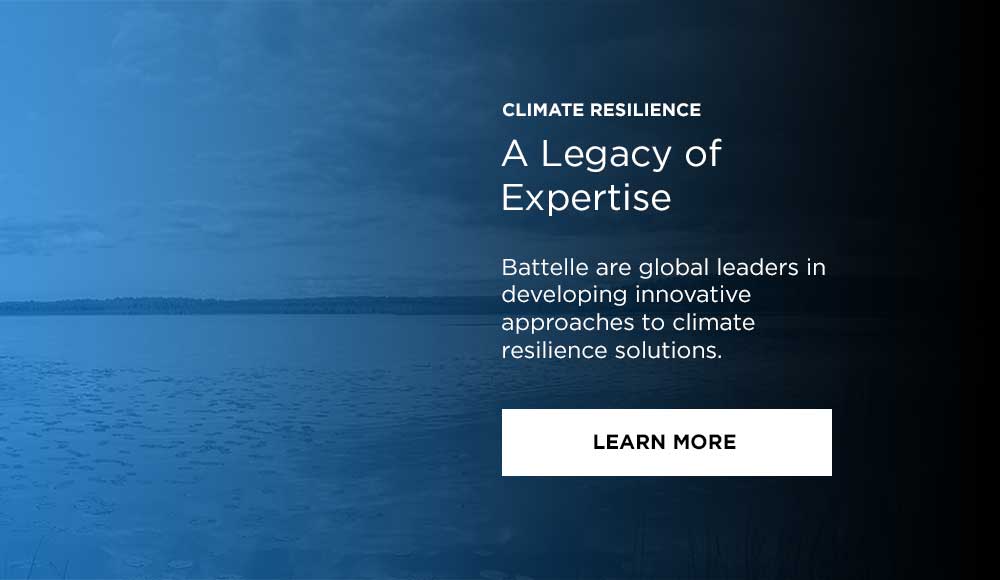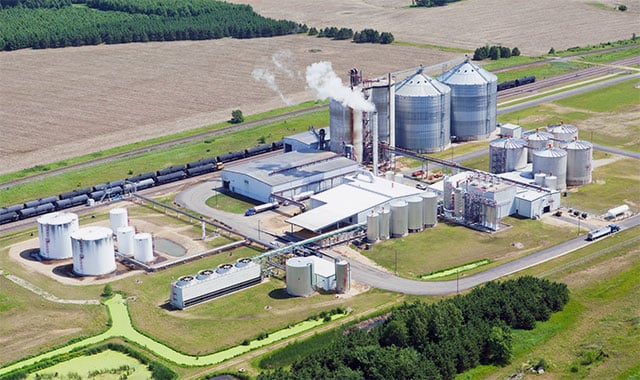How to Bring COP26 Climate Resilience Initiatives to Life

The United Nations COP26 climate conference wrapped up on Nov. 12 with several global environmental commitments, pledges, and partnerships to follow through on with urgency. It’s clear that the world is anxious to bolster the health of the planet, but to do so, we must advance innovation that enables industries, businesses, and countries to keep the climate promises they’ve made. This will require public and private sector organizations to work together and invest time and money into pioneering science-based solutions that mitigate carbon emissions, restore ecosystems, protect against natural disasters and health threats, and strengthen infrastructure and food systems.
Making the Most of Available Money and Programs
To get the ball rolling, we must move quickly to use the funds and resources we currently have at our disposal. We can advance urgently needed solutions by harnessing the full might of our nation’s STEM talent and taking advantage of the numerous provisions aimed at supporting climate resiliency in the $1 trillion Bipartisan Infrastructure Deal signed into law by the president on Nov. 15.
For example, the United Nations (UN) has emphasized the need to rapidly evolve and implement technologies that curb and control the amount of carbon in Earth’s atmosphere as the world labors to make the transition to cleaner energy. The infrastructure bill authorizes $2.5 billion over five years for a bevy of alternative fuel measures and additional funds are also designated for grants and programs that aim to reduce emissions. Scientists, researchers, and engineers must come together and collaborate to turn these initiatives into reality, and a portion of these funds must be applied towards the demonstration and commercialization of a range of advanced energy technologies, including the advancement of carbon management technologies, which have been deemed a mandatory interim solution for keeping the temperature of the planet in check as greener energy practices are put in place. These technologies have come a long way in the last 20 years, but now federal and private sector funding is needed to support and accelerate its advancement and commercial deployment.

Investments must also be made in the development of resilient infrastructure such as power, water, sanitation, transport and telecommunications, as these are people's lifelines to health, education and income. Every extreme weather event and natural disaster takes a toll on people, communities and resources, but we can reduce both the direct losses and indirect costs of these incidents by making sure our critical infrastructure is designed to withstand duress. The new infrastructure bill has substantial funding allocated for this purpose, including $7.3 billion from the main federal-aid highway apportions and an additional $1.4 billion from the Housing Trust Fund for Promoting Resilient Operations for Transformative, Efficient and Cost-saving Transportation (PROTECT), a new program to finance improvements that make infrastructure more resilient to storms and natural disasters. Getting the most out of these dollars will require cross-disciplinary expertise, research and thinking that leverages the power of data analytics and responsive technologies to deliver innovations that optimize our nation’s infrastructure for the challenges that lie ahead. And by making investments in infrastructure resilience now, we will potentially save billions of dollars in recovery and repair efforts in the aftermath of any future crisis down the road.
Additionally, the bill authorizes $500 million over five years to establish Transportation Resilience and Adaptation Centers of Excellence that will study how to make transportation more resilient to extreme weather and climate change, and the success of these facilities will hinge on having knowledgeable experts who can operate and manage them. We must strive to get these centers up and running as soon as possible, so we can identify and implement real-life solutions that ensure we are building safe and robust transportation systems that truly meet the needs of the people who use them.
Bringing Commitments to Life
These provisions and others in the infrastructure bill aim to prioritize the health of the planet, and it’s imperative that public and private sector entities move quickly to put the funds to good use and bring innovative technology and programs to life. To support these efforts and drive progress, Battelle is teaming up with the U.S. Department of Energy National Laboratories to host The Conference on Innovations in Climate Resilience in Columbus, Ohio, March 29-30, 2022.
The curated technical program will convene a sizeable audience of government leaders, entrepreneurs and innovators to explore breakthroughs in technology, policy and infrastructure that will help mitigate the existential threats that our changing climate poses to our environment, health, communities, national security and economic well-being. By bringing a wide array of entities together to collaborate on a diverse mix of topics, we can move the needle on climate resiliency solutions that fortify the health of the planet in impactful ways.
Related Blogs
BATTELLE UPDATES
Receive updates from Battelle for an all-access pass to the incredible work of Battelle researchers.








